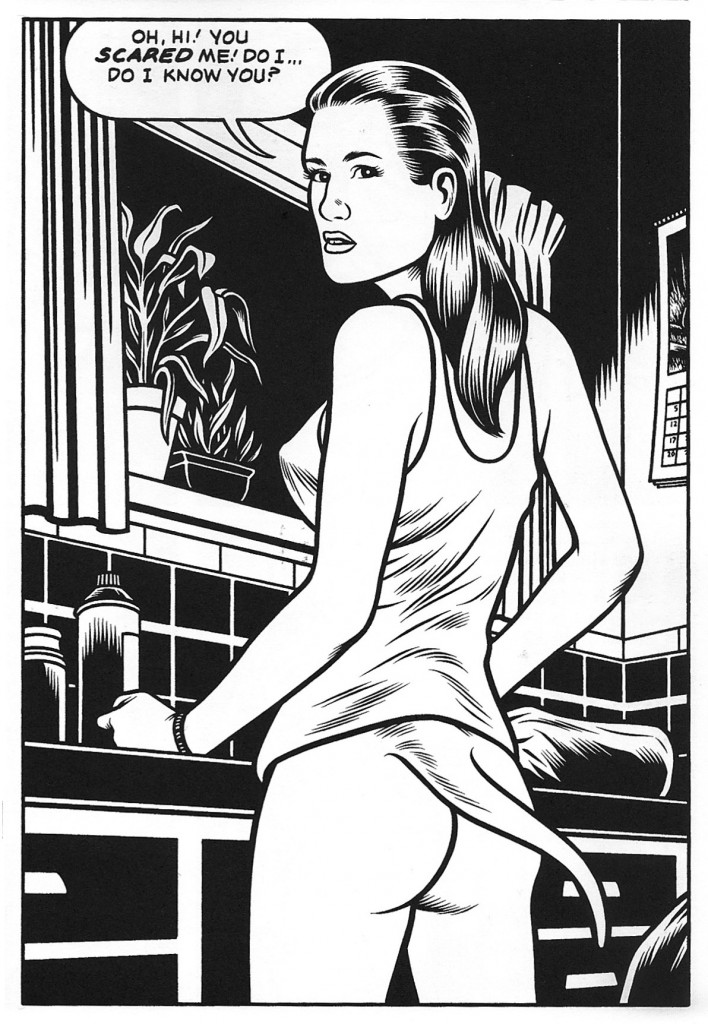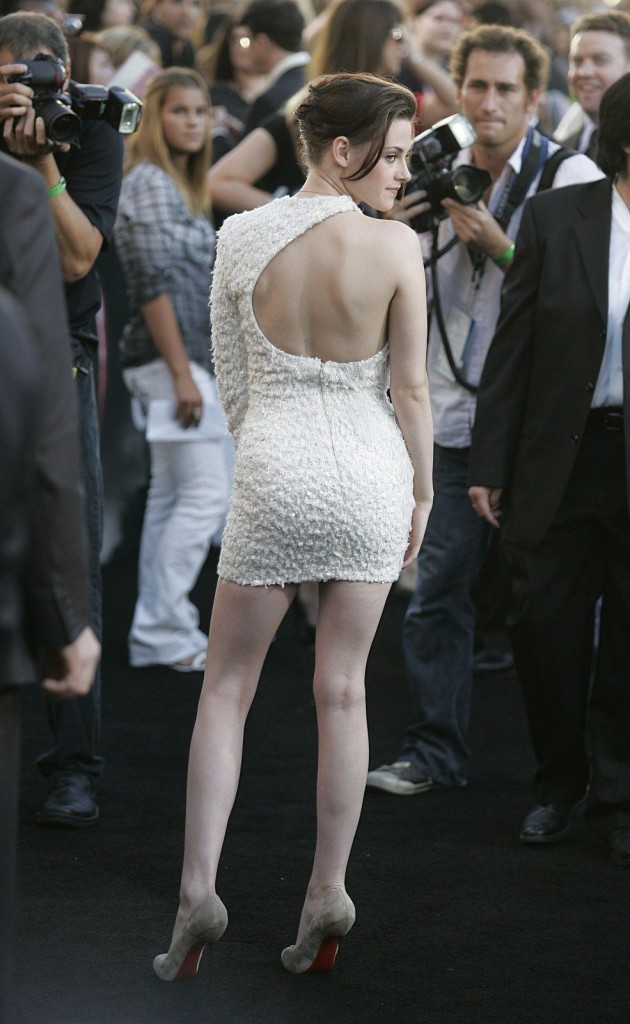Posts Tagged ‘Charles Burns’
BREAKING: KRISTEN STEWART LOVES BLACK HOLE BY CHARLES BURNS
May 15, 2012Drifting over to the graphic novel section, Stewart gasps at seeing Black Hole. “This fucking store is like kismet!” she says. “I want to do this movie!” The book, about a sexually transmitted plague, “is disgusting, so gross,” Stewart enthuses. “I love the first image” – she turns to a completely black page with a white vagina-shape opening in the center – “a slit. You just grow, like, holes in your body. The imagery is so weird. See” – she flips to another page – “he’s looking at her hand and soon there’s gonna be a little mouth in there. It’s so sexual, the desire is so fucking palpable, but it feels so dirty, like [the characters] are so ashamed because they’re diseased, they’re literally getting these holes.”
—Kristen Stewart, Elle, June 2012
NOT MAD AT THIS AT ALL
Comics Time: Johnny 23
January 24, 2011Johnny 23
Charles Burns, writer/artist
Le Dernier Cri, December 2010
64 pages
$24.95 price
Buy it from Le Dernier Cri
Buy it from PictureBox
X’d Out: This Is The Remix. For reasons unknown and with results most welcome, Charles Burns decided to cut up, shrink down, re-order, and re-release his recent surrealist art-sex satire/Tintin tribute, substituting English for an invented alien alphabet and language (has anyone translated it yet?) and reconfiguring the story into something recognizable but still very different. The trick here is that Burns realizes that the recurring images that populate X’d Out — photographs, holes, voyeurs, fetuses, eggs, wounds, cats, vents, nudes — can be used not only as dreamlike leitmotifs but as Legos, basically — connective nubs that allow him to disassemble the original narrative and put it back together in a new way, with the material between those recurring images treated like interchangeable bricks. Couple this with the inscrutable lettering and dialogue and the effect is even more dreamlike, and even more overpowering. The book’s protagonist Johnny 23/Nitnit is tossed seemingly willy nilly from one reality to another; he’ll walk through a hole in the wall in one world as one version of himself and exit into another as the other; he’ll look through a window and see himself; he’ll pick up a photo, we’ll look at the photo, and then we’ll see that his alter ego is now holding it. The book’s new landscape format furthers the sense of relentless forward momentum now that the pages are longer than they are tall, and the luscious purple ink in which the now colorless line art is printed emphasizes the sensuality of the images even more powerfully. It’s some weird erotic nightmare constructed from raw formal mastery of comics. What a performance.
Comics Time: X’d Out
December 15, 2010 X’d Out
X’d Out
Charles Burns, writer/artist
Pantheon, October 2010
56 pages, hardcover
$19.95
Buy it from Amazon.com
Even more so than in Black Hole, the images Charles Burns creates here are small, dense, and inescapable. An abundance of tightly gridded pages filled with repetitive head-on close-ups or point-of-view shots. An avoidance of establishing shots unless they’re designed to mimic what our protagonist Doug sees, nine times out of ten with him on the left-hand side of the panel, our eyes’ transit across the image locked to his own. Narrow rectangular panels consisting of nothing but unbroken fields of disembodied color — some conveying something clear, like maroon panels for the drug-induced unconsciousness brought on by maroon pills, others whose meanings are less clear but no less demanding of our attention, denying us access to anything but that particular color for that particular panel. The recurring use of photographs, sealing a single moment in time. The arising of recurring images unbidden into Doug’s head, single glimpses of scars, cigarette burns, black cats, fetuses, a nude, holes. The way those images weave themselves in and out of both his ostensible real life amid art-punks in the late ’70s and his dream-state/hallucination/extradimensional excursion/whatever it is, and the way that implies that they’re some sort of indelible fabric binding his existence together, like his life could be reduced to these eggs and holes in the wall and black-haired women and black-haired cats and drowning animals. The images are stronger for Burns’s more intense focus on the finite and discrete, on individual moments and objects. Their gravitational pull colors and distorts everything else we see. In much the same way that Doug’s plastic Tintin mask carves away extraneous detail until all we’re left with is the idea of a face, X’ed Out is a story of how both memory and dreams boil our lived experience down to the iconic essentials, however unpleasant they may be. This book could just as easily and accurately have been called 0’d In.



